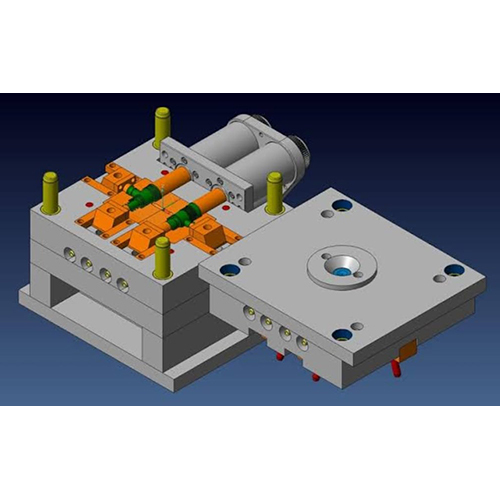पà¥à¤°à¥à¤¶à¤° डाठà¤à¤¾à¤¸à¥à¤à¤¿à¤à¤
पà¥à¤°à¥à¤¶à¤° डाठà¤à¤¾à¤¸à¥à¤à¤¿à¤à¤ Specification
- मटेरियल
- स्टील
- उपयोग
- उत्पाद बनाना
- एप्लीकेशन
- औद्योगिक
- सतह
- पॉलिशिंग
- रंग
- स्लेटी
पà¥à¤°à¥à¤¶à¤° डाठà¤à¤¾à¤¸à¥à¤à¤¿à¤à¤ Trade Information
- Minimum Order Quantity
- 1 Unit
- भुगतान की शर्तें
- कैश इन एडवांस (CID)
- आपूर्ति की क्षमता
- 100 प्रति महीने
- डिलीवरी का समय
- 7 दिन
- मुख्य घरेलू बाज़ार
- ऑल इंडिया
About पà¥à¤°à¥à¤¶à¤° डाठà¤à¤¾à¤¸à¥à¤à¤¿à¤à¤
How Pressure Die Casting Works:
-
Mold Preparation:
-
A mold (die) is created, typically made of high-strength steel, and consists of two parts: the die cavity where the molten metal will be injected and the ejector system that helps remove the finished part.
-
-
Melting the Metal:
-
Metals such as aluminum, zinc, magnesium, and copper alloys are used for die casting. These metals are heated until they become molten.
-
-
Injection Process:
-
The molten metal is injected into the mold cavity under extremely high pressure, often ranging from 10,000 to 30,000 psi. This high pressure ensures that the molten metal fills the mold completely, even into intricate details and thin walls.
-
-
Cooling:
-
Once the mold is filled, the molten metal is allowed to cool and solidify. The cooling process can take anywhere from a few seconds to a few minutes, depending on the material and the complexity of the part.
-
-
Ejection:
-
After solidification, the mold is opened, and the part is ejected using mechanical pins or air pressure. The part is then ready for finishing processes such as trimming or polishing.
-
-
Finishing:
-
The excess material, also known as flash, which forms around the edges of the mold, is removed. Additional processes like painting, machining, or coating may also be applied to ensure the part meets the required specifications.
-
Types of Pressure Die Casting:
-
Hot Chamber Die Casting:
-
In this method, the injection mechanism is submerged in the molten metal. It is typically used for metals with lower melting points, like zinc or lead. The process is faster but more suitable for certain alloys.
-
-
Cold Chamber Die Casting:
-
Here, the molten metal is ladled into the chamber, and then injected into the mold. This is typically used for metals with higher melting points, such as aluminum and magnesium. It requires a higher degree of precision but is better for certain materials that are not suitable for hot chamber casting.
-

Price 200000.0 आईएनआर/ Unit
- Minimum Order Quantity
- Supply Ability
- Delivery Time
- Main Domestic Market

Price: Â
- 50
- 100
- 200
- 250
- 500
- 1000+




 जांच भेजें
जांच भेजें एसएमएस भेजें
एसएमएस भेजें English
English Spanish
Spanish French
French German
German Italian
Italian Chinese (Simplified)
Chinese (Simplified) Japanese
Japanese Korean
Korean Arabic
Arabic Portuguese
Portuguese